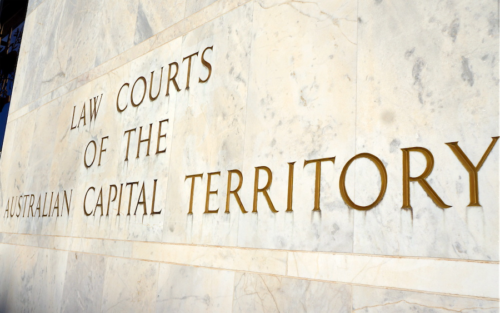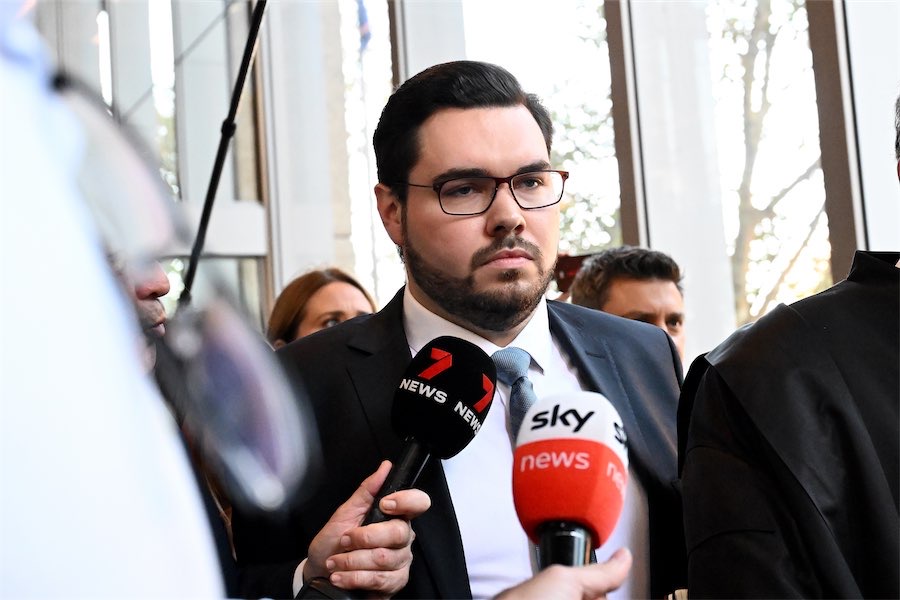“Light rail has been from the outset and remains a financial disgrace!” thunders letter writer MAX FLINT, co-ordinator of Smart Canberra Transport
JACK Kershaw is perfectly correct in his criticism of the PPP (Public Private Partnership) delivery method (Letters, CN January 18), which has been used from the inception on light rail, as a stitch-up by the lead contractors and the unions to exploit (even extort) the public purse.

Remember that there has been a long-standing memorandum of understanding (MOU) between the UnionsACT and the ACT government which gives a virtual veto power over any ACT government tender preparation and selection as well as conditions of any contract entered into.
PPP contracts are also much more expensive in financing, in that the government can borrow money more cheaply than the contractors. Yet the government chooses to pay the contractors more to borrow plus their profit mark-up on top of that.
Of course, the whole light rail set-up stinks to high heaven, but Labor must obey its union masters and to hell with the taxpayers.
Given the outrageous contract price for Stage 2 of $577 million (for construction only, mind you), the Liberal Party should revisit and qualify its support for Stage 2A and, at least during the election campaign, promise a detailed independent investigation into the Stage 2 contract, notwithstanding claimed contractual confidentiality.
Light rail has been from the outset and remains a financial disgrace!
Max Flint, co-ordinator, Smart Canberra Transport, Erindale
Paying a huge price for rushing into renewables
Eric Hunter (Letters, January 18) cites “the experts’ conclusion that nuclear is an uneconomic and time-short proposition for this country compared with renewables” as if these claims were irrefutable.
Whether an electricity grid covering eastern Australia based on solar, wind, battery and hydro energy sources linked by an unprecedented power transmission network is economically the best remains to be seen.
It might even be argued that the environmental costs of this approach are unacceptable, or that the maintenance costs of such a widely distributed system will be uneconomic in their own right.
One matter that is agreed is that costs of electricity for the consumer are going to continue to rise for the foreseeable future, whether they be in supply charges or government investment in developing the system.
Rejecting nuclear power because the situation is time-short is another contentious argument.
We are paying a huge price for rushing into renewables when the big contributors to global warming are yet to begin reducing their emissions. For example, the Snowy 2 disaster with its $10 billion blow out (the cost of two large scale 1 GW nuclear reactors) might have been avoided by spending more time on an extensive geological investigation of the tunnelling route.
John L Smith, Farrer

How about a cruise liner to jazz up lake?
Having just returned from an excellent expeditionary cruise of NZ’s Fiordland and subantarctic islands, it occurs to me that Lake Burley Griffin, although beautiful, could do with a bit of jazzing up.
How about importing a redundant cruise liner from somewhere, like the little one pictured in Dunedin harbour?
It could be moored somewhere nice and central, like Commonwealth Park, and provide some floating restaurants as well as a substantial amount of rental accommodation. I’m not sure about the logistics of getting it to Canberra, but maybe Clive Palmer could help?
Richard Johnston, Kingston
Roll on the solid-state, all-lithium battery
In her article “Riches or rubbish: here’s the electric vehicle battery surge” Jennifer Dudley-Nicholson (CN January 18) discusses at some length the fate of exhausted electric vehicle (EV) batteries.
She concludes that all batteries are eventually disembowelled for their content of valuable and rare metals, or are consigned to the battery burial ground (euphemistically known as landfill).
It need not be this way. Scientists at Harvard’s School of Engineering and Applied Sciences have developed a new type of battery that differs radically from the ubiquitous lithium-ion version: the solid-state, all-lithium battery.
This has 10 times the electrical capacity of lithium-ion batteries that use graphite anodes; can be recharged at least 6000 times in a matter of minutes, and is not prone to overheating or catching fire.
The end result is a battery that will drastically increase the driving range of EVs and the number of dead batteries being gutted or consigned to the grave.
Dr Douglas Mackenzie, Deakin
Who can be trusted?
In a world of spin and confusion, there’s never been a more important time to support independent journalism in Canberra.
If you trust our work online and want to enforce the power of independent voices, I invite you to make a small contribution.
Every dollar of support is invested back into our journalism to help keep citynews.com.au strong and free.
Thank you,
Ian Meikle, editor





Leave a Reply